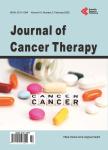版权所有:内蒙古大学图书馆 技术提供:维普资讯• 智图
内蒙古自治区呼和浩特市赛罕区大学西街235号 邮编: 010021

作者机构:Clinica Medica " Cesare Frugoni" Department of Interdisciplinary Medicine University of Bari " Aldo Moro" Bari Italy
出 版 物:《Journal of Cancer Therapy》 (癌症治疗(英文))
年 卷 期:2018年第9卷第5期
页 面:417-437页
学科分类:1002[医学-临床医学] 100201[医学-内科学(含:心血管病、血液病、呼吸系病、消化系病、内分泌与代谢病、肾病、风湿病、传染病)] 10[医学]
主 题:Hepatocellular Carcinoma (HCC) Hepatitis B Virus (HBV) Hepatitis C Virus (HCV) Non-Alcoholic Fatty Liver Disease (NAFLD) Non-Alcoholic Steatohepatitis (NASH) Insulin Resistance (IR) Type 2 Diabetes Mellitus (T2DM) Intestinal Microbiota Visceral Obesity Alfa-Fetoprotein (αFP) Protein Induced by Vitamin K Absence or Antagonist II (PIVKA-II)
摘 要:Hepatocellular carcinoma (HCC) is the most frequent primary liver cancer with a high mortality rate. While chronic hepatitis B virus (HBV) and hepatitis C virus (HCV) infections represent the leading risk factors worldwide, the spreading of metabolic disorders, such as diabetes, obesity and non-alcoholic fatty liver disease (NAFLD) justifies the increasing attention on their oncogenic mechanisms. This review discusses about the main pathogenic mechanisms implicated in occurrence of HCC in presence of viral and metabolic diseases. Additionally, it points to the importance of clinical surveillance for those patients considered at risk of HCC and highlights the strategical role of serum markers, such as alfa-fetoprotein (αFP) and Protein Induced by Vitamin K Absence or Antagonist II (PIVKA-II), which, in association to a strictly instrumental follow-up, contribute to the early detection of hepatic nodules with a better prognosis for affected patients.